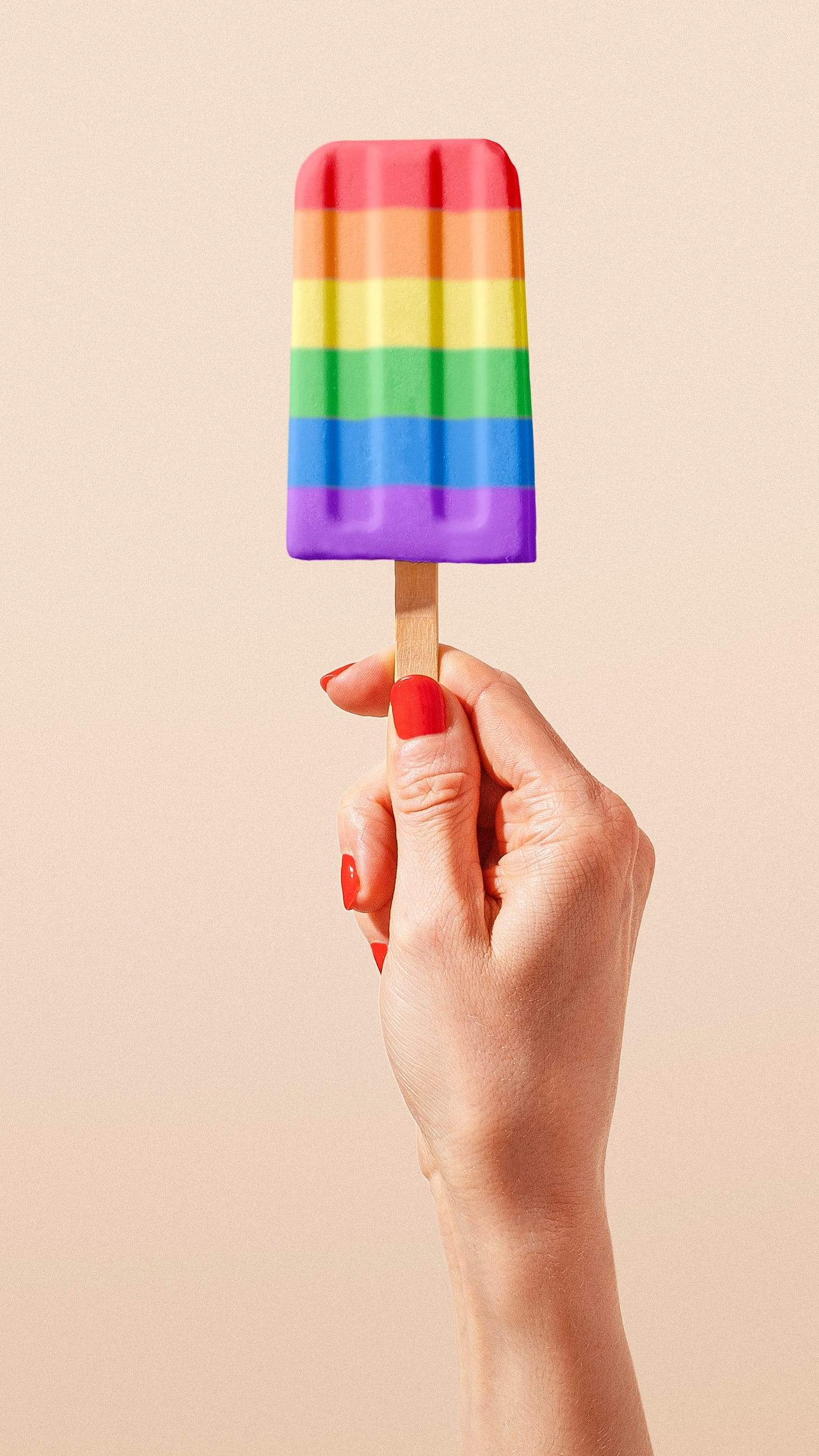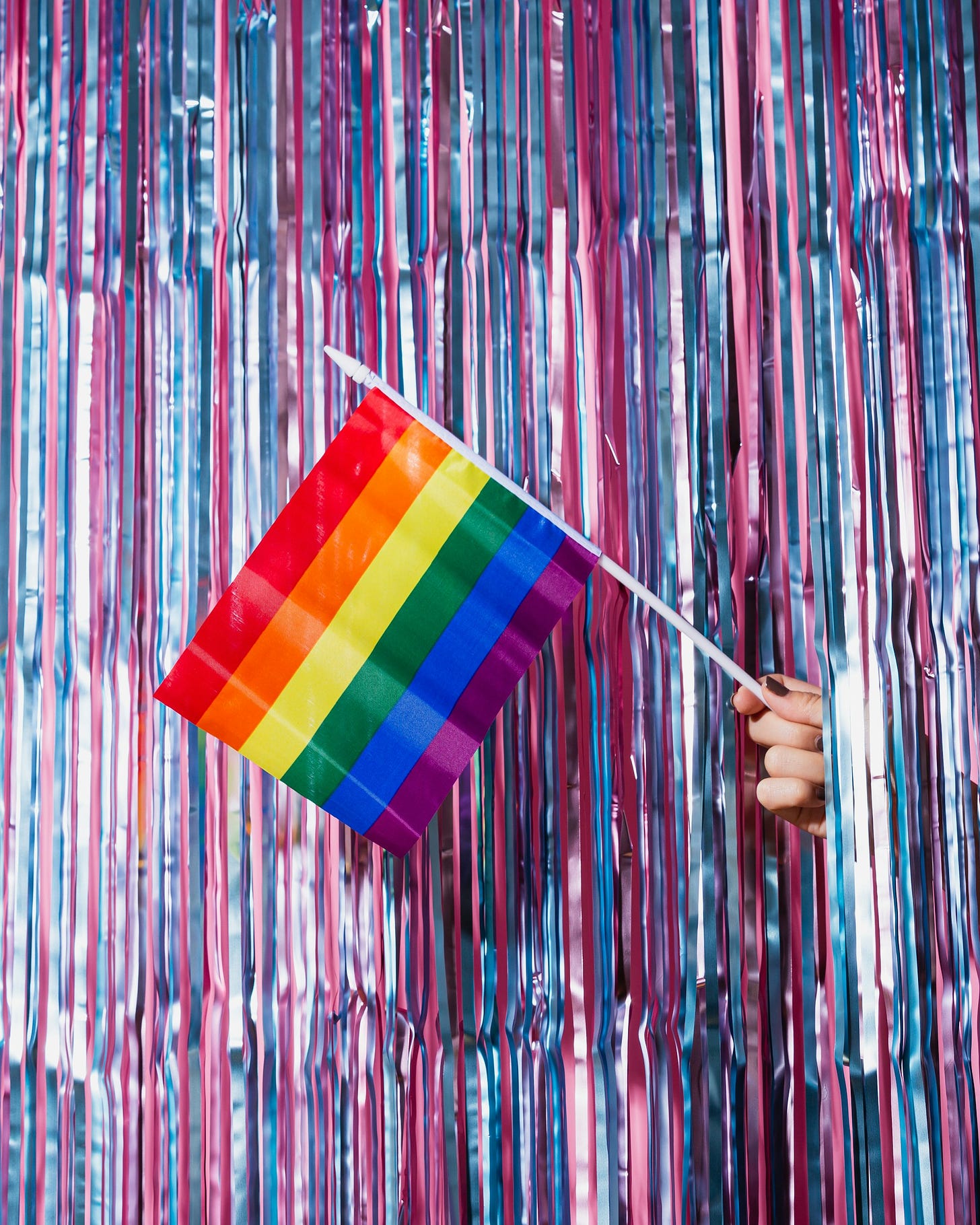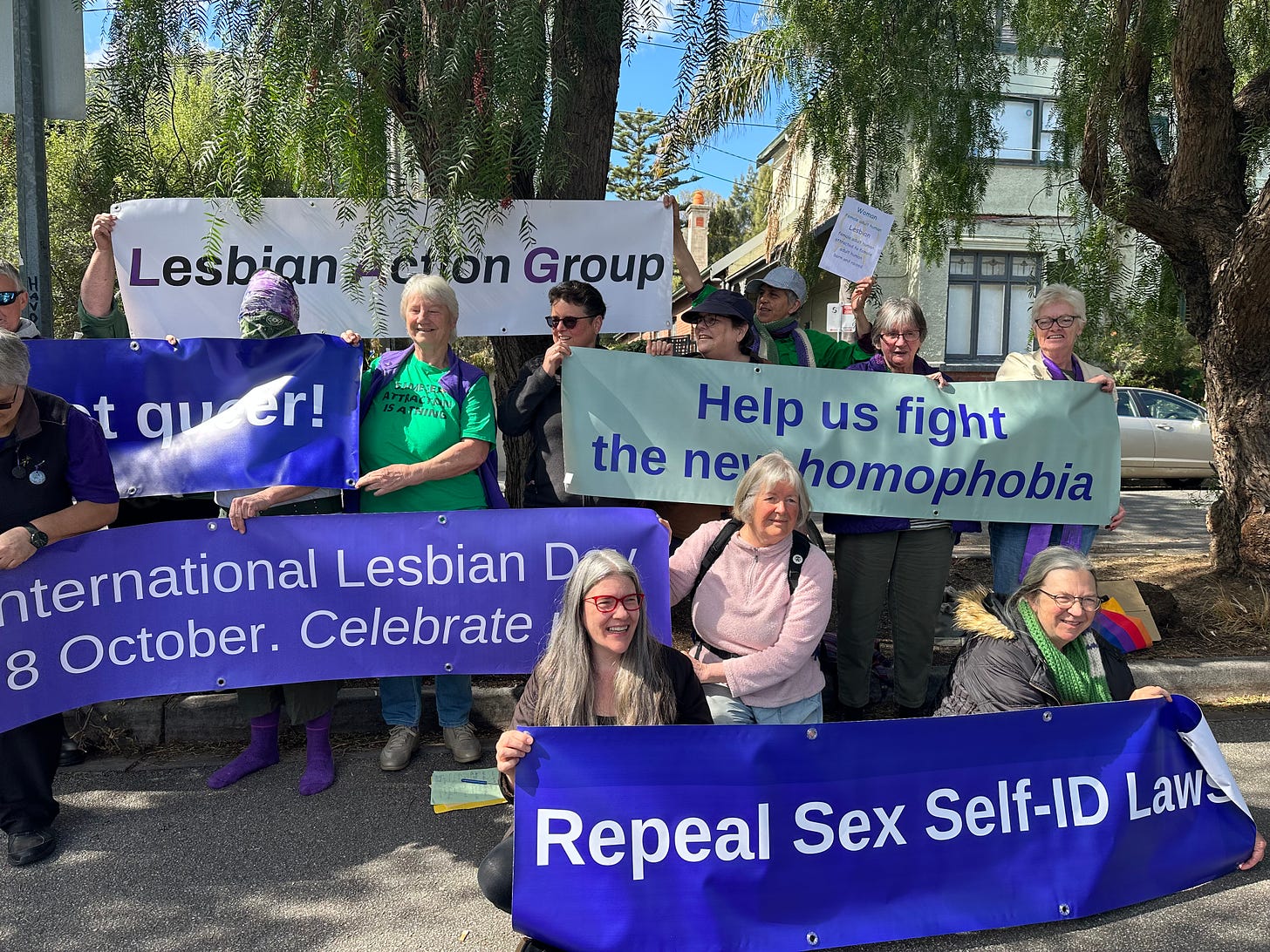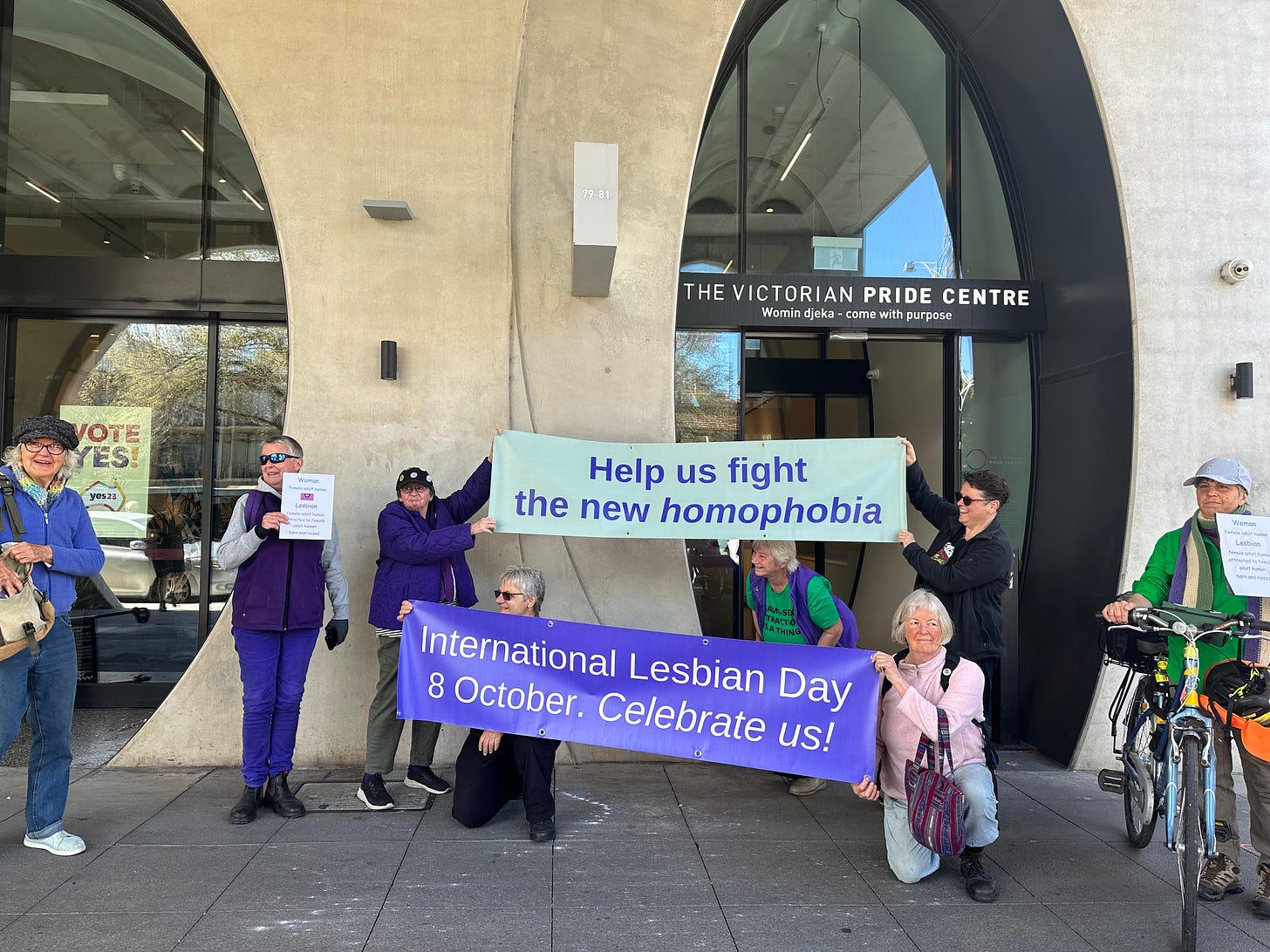
Stewart Fenwick, who sits on the Commonwealth administrative appeals tribunal, might have wondered what he’d done wrong in a previous life to find himself adjudicating a case involving allegations about the male fixation on ejaculation, old-school lesbians sharing common ground with Nazis, lesbophobia, autogynephilia, “girl dick” and “sissification” porn. (A little patience and all will be explained — I’m a tease, I know ..)
While we cannot speculate as to Member Fenwick’s state of mind — other than to say he presented in my estimation as a level-headed bloke trying to navigate a sociological minefield — he was, on at least one occasion, observed with his head in his hands.
The two-day hearing early last month was an appeal against the Australian Human Rights Commission rejecting a year ago an application from a group of lesbians — the Lesbian Action Group — to hold public events exclusively for “lesbians born female,” a door rule that would have excluded, among others, trans women, meaning biological males identifying as lesbian.
A decision is expected to be handed down before December.
The case is one of several currently before Australian courts and lesser jurisdictions that touches on the question, “what is a woman?” and lays bare the efforts of mainstream politicians and sense-making institutions to suppress debate on the question — perhaps because their policies would not withstand scrutiny.
An appeal is being lodged in the landmark Federal Court case of Tickle v Giggle, in which a female-only app and its owner were found to have indirectly discriminated against a trans woman (biological male) on the grounds of “gender identity.” (The decision, in my view, uncritically adopted trans-activist mantras — you can read my analysis here.)
The same court is hearing the lengthy and politically intriguing trial of Victorian MP Moira Deeming’s allegations that state Opposition leader John Pesutto defamed her as a Nazi sympathiser in the aftermath of last year’s infamous Let Women Speak rally — an “anti-trans” rally in the reckless media shorthand — where neo-Nazis gatecrashed and sieg heil’ed in front of Parliament House. (For some background on the controversy, in particular Pesutto and the media’s disgraceful vilification of private citizen Angie Jones, see my post here.)
Elsewhere, Victorian breastfeeding expert Jasmine Sussex is being taken to Queensland’s Civil and Administrative Tribunal for alleged vilification after she labeled attempts by trans women to breastfeed their children “experimental’’ and a “dangerous fetish”. Yes, some biological males — presumably, and mercifully, small in number — are taking a cocktail of hormones to induce pseudo lactation so as to breast feed the baby they fathered. Is your head spinning yet? (For an entertaining and erudite dissertation on male “breast feeding” — and many other things besides — see Bronwyn Winter’s Substack here.)
**
The trans debate tends to be framed around the definition of woman; but it is better described as “what is a man?”
Such a lens would admittedly not appeal to people who believe humans have a sexed “soul” or essence that’s either aligned or misaligned with their genitalia at birth. In this worldview a biological male can possess a female gender identity that makes them literally a woman, and vice versa in the case of a female with a male gender identity. It is the philosophy underpinning the gender self-ID regimes that have swept through jurisdictions throughout the West, enabling people to change their legal sex by mere declaration. On Thursday NSW joined the rest of the country in passing laws allowing people to change their birth certificates without having to undergo surgery.
Those of us who reject notions of a “sexed soul” as absurd and quasi religious overwhelmingly accept some people experience intense and enduring alienation from their sexed body. But clinging as we do to the old-fashioned understanding of sex as binary, rigid and immutable 99.97 per cent of the time, we’re naturally persuaded that a feeling of alienation from one’s sexed body is often — by no means always — itself a symptom of the sexed body.
Hence, it becomes politically necessary to speak frankly about male sexuality and how starkly it differs from female sexuality. I don’t wish to offend any penis havers reading this piece in pointing out that the male sex drive is a relentless and relentlessly creative force — and hey, where would the human species be without it?
Where women are from Venus, men disproportionately inhabit planet Kink, a place of fetish and psychosexual obsession from the harmless to occasionally perverse and even violent. If the world’s men were to suddenly default to a female sexuality the multi-billion dollar porn industry would instantly deflate. For while I’m sure an exhaustive search would turn up the odd woman with coprophilia — getting off on defecation — or apotemnophilia — getting off on the thought of being an amputee — or, sorry to get dark, paedophilia, such atypical impulses overwhelmingly attach to males.
And, yes: some heterosexual males identifying as trans are motivated by auto-eroticism. In essence they get off on thinking of themselves, or seeing themselves, as a woman. This is a love that these days dare not speak its name: autogynephilia, meaning “love of oneself as a woman.” (Immerse yourself in the trans debate long enough and the term all but rolls off the tongue.) It was coined in 1989 by American-Canadian sexologist Ray Blanchard from his observations of some non-homosexual males with gender dysphoria, a sense of misalignment with one’s birth sex.
Blanchard’s colleague, J. Michael Bailey, fleshed out the autogynephilic typology in his 2003 book, The Man Who Would Be Queen, a sympathetic text that nonetheless sparked a furious backlash from trans activists, some of whom accused him of perpetuating a derogatory explanation of transgender identity that would incite hatred and ridicule towards trans people. Inconveniently for trans activists, however, a good number of trans women have outed themselves as autogynephilic — as well they should, without shame or stigma.
Because anyone who thinks I’m being nasty in airing this subject, well, that’s on them and says everything about their own prudishness and prejudice. I’m the daughter of a sex therapist. So I reckon it’s cruel, wrong and hypocritical to pathologise an individual’s sexual inclinations so long as those inclinations don’t harm others.
(For an interesting podcast episode that hears from Bailey, as well as an autogynephilic male and also sketches the internal debates among “gender-critical” activists on forging alliances with “out” autogynephiles listen to Stassja Frei’s here.) Quillette also has a fascinating, and respectfully matter-of-fact, interview here with author Debbie Hayton who describes herself as “a self-attracted male person who prefers to be perceived by the rest of the world as a woman.”)
The most authoritative memoir and exploration of male self-love-as-a-woman belongs to trans woman and academic, Anne Lawrence, and is alone worth mentioning for its genius title, Men Trapped in Men’s Bodies, which subverts the popular mythology of trans women being “women trapped in men’s bodies.”
Not that long ago we could speak openly of a category of men known as cross-dressers or transvestites, and recognise the erotic impulse behind such behaviours. As late as 2012, the pioneers of paediatric gender transition at what became known as the Amsterdam Clinic wrote of the need for clinicians to differentiate adolescents with longstanding gender dysphoria from those who may be confused about their sexuality or their “transvestic fetishism.” Nowadays, the website TransHub, a creature of the health and lobby group, ACON, in a section outlining the history of gender-related diagnoses, blacks out the word “transvestite” with a trigger warning lest any readers be ambushed by its appearance and suffer trauma.

That it’s now taboo to acknowledge some men seek transition for psychosexual reasons testifies to how infantilised society has become. This is partly down to trans activism’s totalitarian impulse to censor honest discussions. Although, interestingly, I once asked a psychiatrist, a practitioner of “gender affirming” therapy but one who struck me as less ideological than most, whether they believe autogynephilia is a thing. The response: “I’d say yes ... The analysts would probably say that it is virtually universal amongst males at a very deep level, as our first love objects are our mothers.”
This is just my own theory but maybe another reason for the taboo around autogynephilia is the tendency to pathologise male sexuality, full stop — the constant invocation of masculinity as “toxic” and so on. Maybe this discourse reinforces the shame and stigma around autogynephilia, deterring males from fessing up to it.
Trans rights activists, meanwhile, have good reasons to disavow autogynephilia is a thing. After all if we were to accept that far from being literally women trans women are men who in some instances derive sexual and emotional satisfaction from being affirmed as women, the political case for trans inclusive female-only spaces — women’s changing rooms, lesbian clubs and the like — instantly falls apart.
No-one with a modicum of self-awareness would dare argue that public policy should centre the needs of fetishistic males at the expense of women’s comfort, privacy and safety. Yet that is what we’re doing in large part. A humungous Z-cup part, in the case of the male high school teacher near Toronto (where else?) who began showing up to work with porn-inspired prosthetic breasts, complete with giant protruding nipples, to the initially affirming response of the school board that cited his right to express his “gender identity” under the Ontario Human Rights Code. He has since insisted the breasts are real.
I’m tempted to publish photographs of this teacher and his absurd chest, but that would be too tabloid for Szego Unplugged. Feel free to look it up — though maybe not while you’re at work.
**
In light of everything I’ve just told you, it’s been fascinating to watch courtrooms forced to grapple with hitherto suppressed adult concepts, autogynephilia among them.
At one point during the Deeming defamation trial, Pesutto’s barrister, Matthew Collins KC, led evidence that British activist Kellie-Jay Keen-Minshull, host of the Let Women Speak rallies, had claimed trans people did not exist and were part of a “dirty fetish.” Justice O’Callaghan sought clarification from Collins on how he understood trans, to which the senior counsel replied trans is not a fetish but a “gender identity.”
Now, Keen-Minshull — a.k.a Posie Parker — too often resorts to insult and borderline bigotry in fighting a defensive war against the erasure of women and their boundaries; her reference to trans as a “dirty” fetish one such example. But Collins is wrong; the umbrella category of “trans” includes fetishists. And he’s wrong to imply “gender identity” is a settled concept in science when it’s in fact hotly contested.
**
And so to the Lesbian Action Group’s case, mentioned at the start of this post.
Many of you will recall how the parties got here. Last August, Victoria’s Pride Centre knocked back LAG’s request to hold an event exclusively for “lesbians born female” on the grounds it would exclude trans women contrary to the values of that $50 million temple to homophobia — yes, that last bit is me editorialising. LAG then sought the necessary carve out from the Sex Discrimination Act so it could hold the “lesbians born female” event, setting out its case to the Australian Human Rights Commission, otherwise known as the Australian Commission for Undermining Human Rights — and yes, I’m ad-libbing again.
The AHRC likewise denied LAG’s application on the grounds it would amount to unlawful discrimination under the Act, amended in 2013 to remove the definitions “man” and “woman” and include “gender identity” as a protected characteristic. It would not be “appropriate and reasonable to make distinctions between women based on their biological sex at birth.”
At the hearing, counsel for the AHRC argued that every group under the Act is guaranteed the same bundle of rights — there is no “hierarchy” of protected groups. Taking trans women out of the protections of the Act is a high bar to meet.
“This is not a contest of who is most marginalised,” she said.
I won’t give you a full dissertation on the various legal arguments — which covered fascinating and rarely cited freedoms under international human rights law such as the right of minorities not to be subjected to forced assimilation, invoked by LAG. Indeed I can’t go into detail about the AHRC’s legal arguments because the body has released none of its court documents to the public, including expert reports. LAG’s case, by contrast, is an open book; all its material published on the Feminist Legal Clinic’s website. A spokesperson for the AHRC told me that to obtain copies of the documents I would need to make a request to the tribunal; a spokesperson for the tribunal told me the presiding member had decided the documents will be released only after his ruling is published.
So as foreshadowed I’m going to highlight only two aspects of this case; its airing of taboo themes around male sexuality, and what I regard as the deeply ideological posture of the AHRC.
The case was in many respects a study in contrasts, starting with counsel for both sides. Counsel for the AHRC, Dr Daye Gang, projected a seemingly technocratic approach; LAG’s Leigh Howard’s tone was more expansive — he frequently referred to “we lesbians,” and “my lesbians.”
“We’re female and we’d like some rights, please,” he said.
But the most striking contrast lay in the duelling witnesses called as experts for the respective sides, specifically Jeffreys versus Jeffreys. In LAG’s corner stood veteran radical feminist and professor of political science at the University of Melbourne, Sheila Jeffreys. In the AHRC’s corner, was Sheila’s ideological, not to mention aesthetic opposite, Dr Elena Jeffreys, an academic and sex worker advocate. Elena boasts blue-green hair: Sheila rejects make-up on political grounds but makes up for it with her colourful book titles. One is called “Penile Imperialism.”
Sheila Jeffreys’ expert report in the case is no less dazzling; a mini-dissertation on the core tenets and philosophies of lesbian feminism, a love-child of the 1960s gay liberation and women’s liberation movements, and on its adherents’ decades-long fight for visibility and self-determination. Lesbian feminism is a separatist movement, Sheila Jeffreys declares, “focused on love for women and a profound critique of the structure of women’s oppression which was understood to be based upon compulsory heterosexuality and its customs and practices.”
Where from a masculine perspective sex is “directed towards the outcome of male ejaculation,” lesbian sex is holistic, open-ended and orientated towards mutuality.
But lesbian feminism has been in decline, she explains. This started in the late 1980s and 1990s when the movement found itself under assault from a conservative backlash against gay rights on the one hand and on the other, a burgeoning pornography and sex industry that cast lesbian feminists as puritanical and anti-sex. Where gay male venues survived, lesbian bookshops and bars all but disappeared. The new century brought a new threat: a preponderance of young lesbians encouraged to identify as male, as well as “the return of ‘lesbophobia’ by those who think the rights of lesbians are conditional on them accepting gender identity ideology.”
“The inclusion of men whatever their ‘identity’ in lesbian spaces is a problem,” writes Sheila Jeffreys, “because their only reasons for being in such spaces, considering that they are not lesbians, are likely to be ‘affirmation’ or sexual satisfaction.”
In her evidence via video-link she told the tribunal about Ray Blanchard’s diagnosis of autogynephilia, one that extended the understanding of transvestism beyond that of men wishing merely to dress as women, “to the way in which these men might wish to act out behaviours they think belong to women; such as they may use tampons, they may pretend to menstruate.”
“The form of the men’s sexual proclivities can be readily observed in the section of the pornography industry that serves them,” she writes, going on to describe “sissification,” “sissy hypno” and “bimbofication” porn — sub-genres that eroticise the humiliation of men forced to “become” women.
She claims “there is a considerable and increasing body of evidence” that “men who claim to be women are likely to become abusive and even physically violent towards women who .. persist in saying that they are in fact men.” (On cross-examination she conceded the abuse also comes from female transactivists.) She speaks of “the cotton ceiling,” a term used to describe lesbians setting what is perceived as unjustified sexual boundaries for men with gender identities. She cites the website, “TERF is a slur” that claims to be a compilation of online abuse directed at lesbians, including sloganeering such as “I punch TERFs” and “TERFs can choke on my girl-dick.”
“TERFs are trans-exclusionary radical feminists,” she tells the tribunal. “This is a definition that transvestite men developed in their anger at feminists.”
Elena Jeffreys — whose evidence I cannot extensively quote because, like I said, the AHRC won’t release her report — has studied how different groups “coalesce” and interact with institutions. Such research, as well as her experience as a lesbian, leads her to conclude there is a lot of crossover between the lesbian feminist and sex-worker communities. (The latter, we might assume, are more accomodating towards penile imperialism.) She insists the lesbian feminists who believe trans women are men are not a large group.
This subset of “trans-exclusionary” lesbians, she said, share some common ideological ground with neo-fascists and white supremacists as both groups actively exclude people who don’t “fit the norm.”
Alas, it’s no great surprise that a queer activist, even one called as an expert witness, deploys the “TERFs are Nazi adjacent” smear — in fact it’s probably a good thing. The country’s judicial officers should be exposed to the toxic hyperbole that masquerades as rational argument in this space. Far more shocking is the fact such arguments carry the imprimatur of our public institutions.
Howard, LAG’s counsel, told the tribunal that the AHRC described Elena Jeffreys’ evidence as “commendable.” But the claim that his clients have more in common with Nazis than with other lesbians is, he argued, “prejudice and hate speech enabled by the Commission and not to be commended. It is outrageous.”
The AHRC’s approach was disturbing for other reasons too. For instance, the Commission asked the tribunal to consider what “utility” granting LAG an exemption from the Act might have when it “would not stop people” protesting outside LAG’s events. It is a novel argument, to put it mildly, against the granting of rights. By the AHRC’s reasoning the government shouldn’t legalise abortion as Christian fundamentalists will likely protest outside clinics. (In fact, the Victorian government created exclusion zones around abortion clinics; might patrons at lesbian events be entitled to the same protection from harassment?)
The AHRC also sought to tender a recent coronial report on trans suicide to support an argument that allowing LAG to hold public events would contribute to heightened mental health risks among some trans women. (How long will the trans activist lobby and its captured state institutions persist in sullying the public discourse with the “do as we say or there’ll be blood on your hands” threat?)
“To say that my client associating publicly creates a risk of suicide is so extreme,” said Howard, and “outrageous.”
The AHRC told the tribunal it had taken care to be “impartial” in the case and had expressed no view on what the outcome should be.
Howard was having none of it.
“I am sick and tired of this pretext of diplomacy (from the AHRC) that ‘we are all here to assist’— reject it,” Howard urged the tribunal.
When the government files evidence equating LAG with Nazis, we should “forget the pretext of diplomacy.”
“There are lesbians who are not attracted to men, including transgender people; they find it repulsive,” said Howard in his closing remarks. “They need spaces to associate. That I should have to verbalise this in front of my own government is appalling.”
Words, I’d suggest, of a new lesbian icon. Strictly in a manner of speaking.








Thanks for writing this article Julie. It's so good to see LAG's case presented in a clear and accurate way by a real journo. And thanks for airing the fact of AGP men and the way their paraphilia has suddenly been given nationwide legal backing. What a surreal situation. I continue to hope women's sex based rights will reinstated and we can then keep any men out of our spaces. As a lesbian I now know what it is to have to meet in secret... it's like time travel.
We should all be calling on our local members to repeal the self-ID laws. They make a mockery of public records such as birth certificates and they are the legal bedrock for the lunacy currently being debated and decided in various courts of the land. These laws represent the greatest threat to the safety of women in female-only spaces.